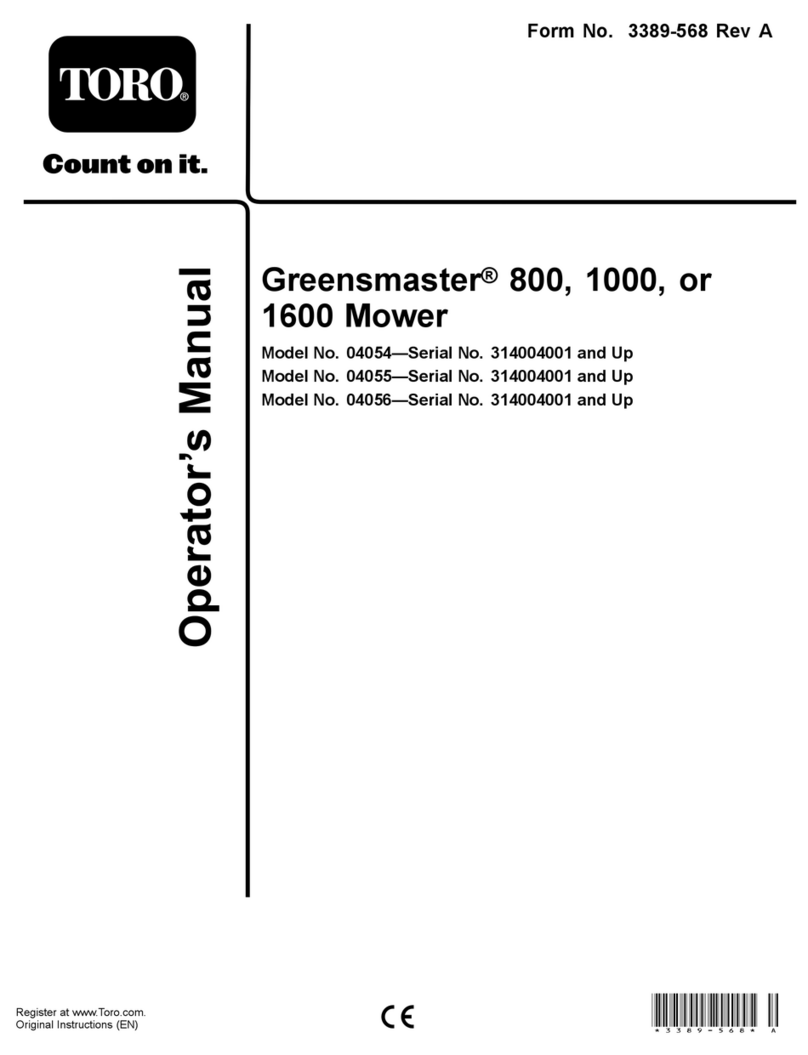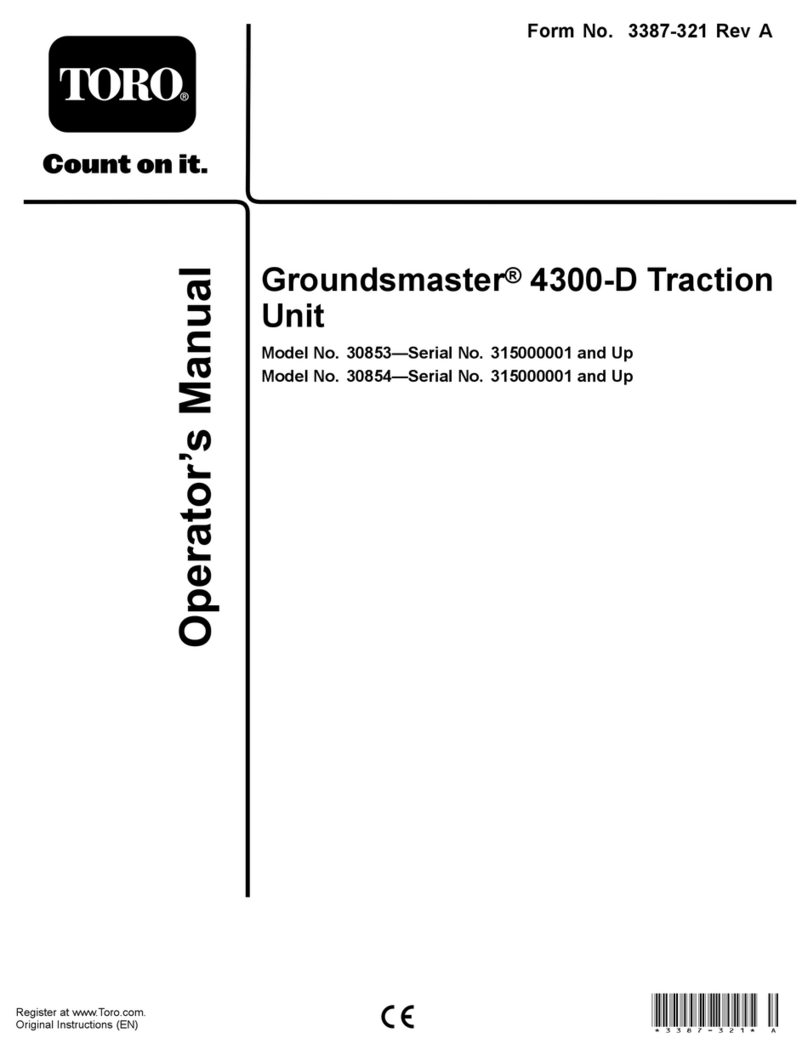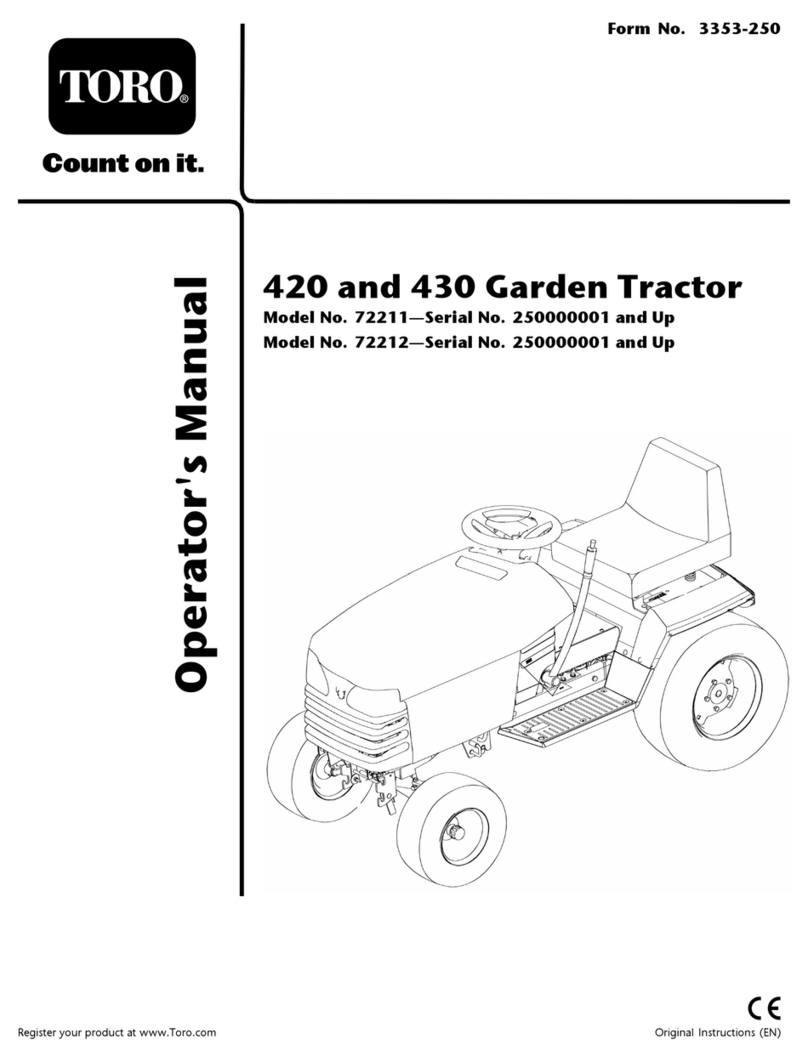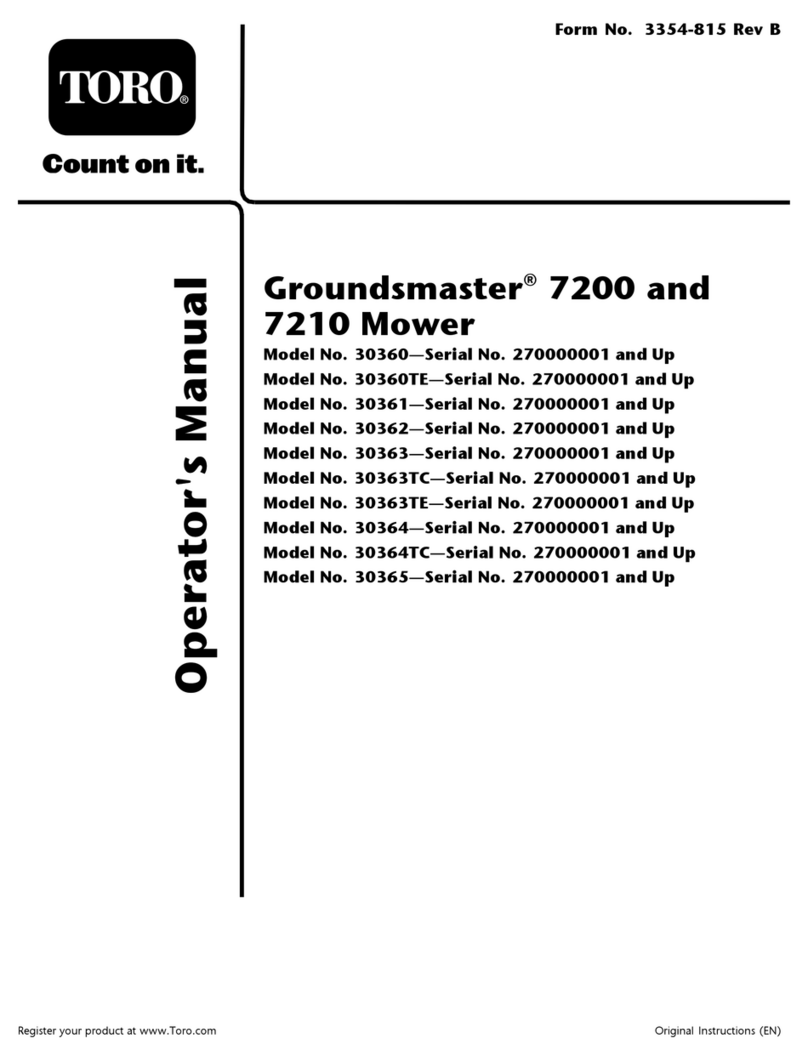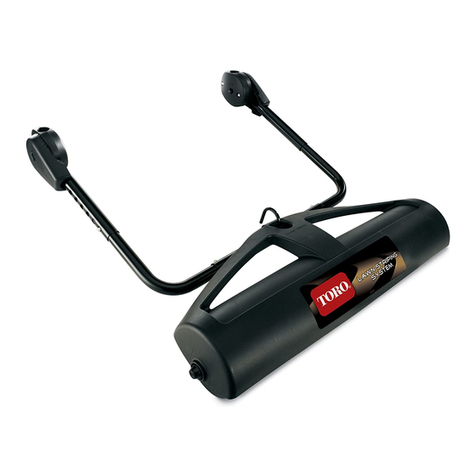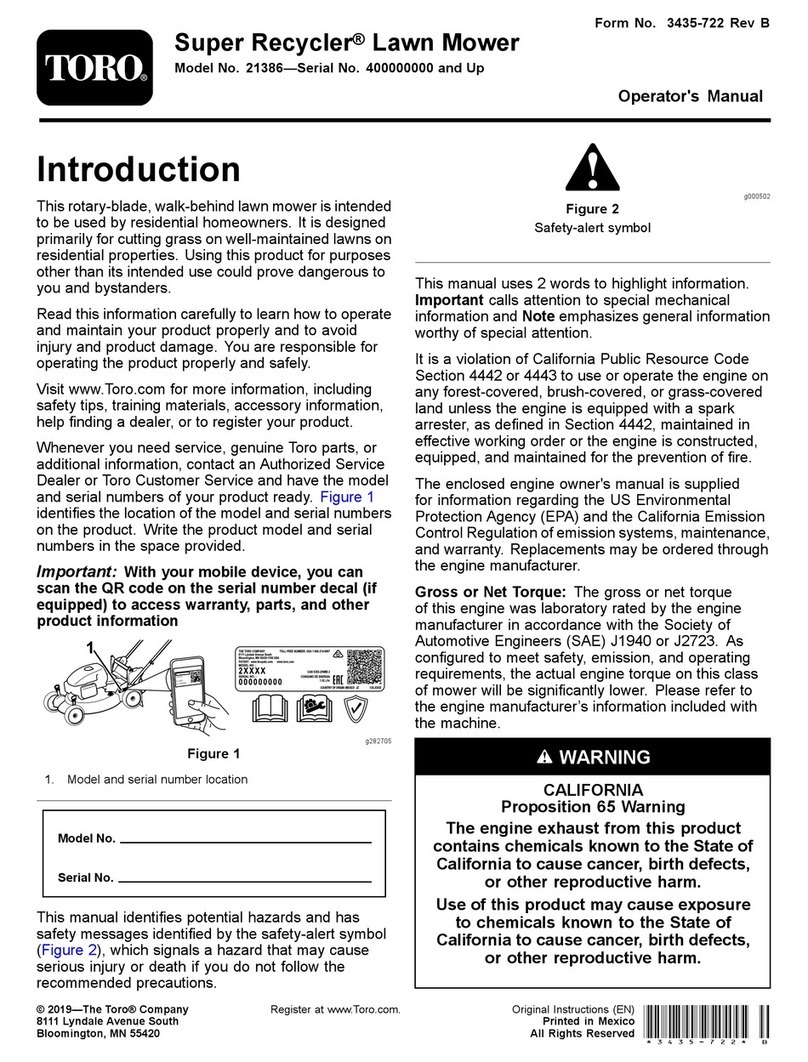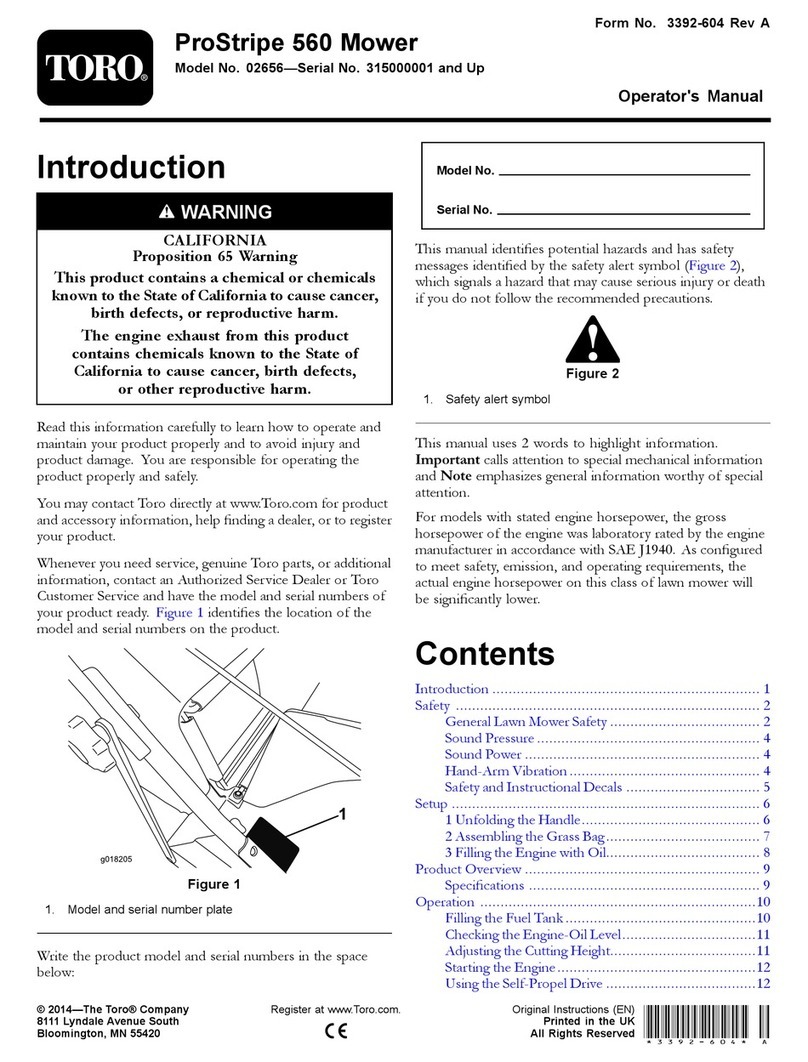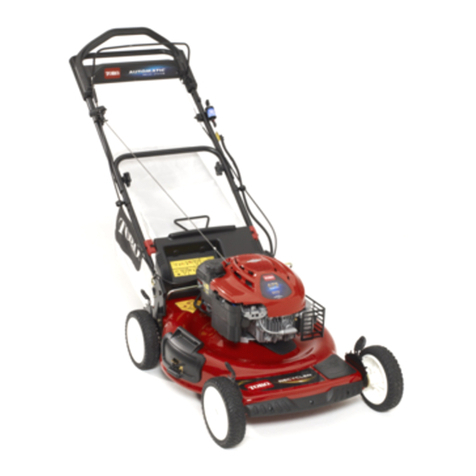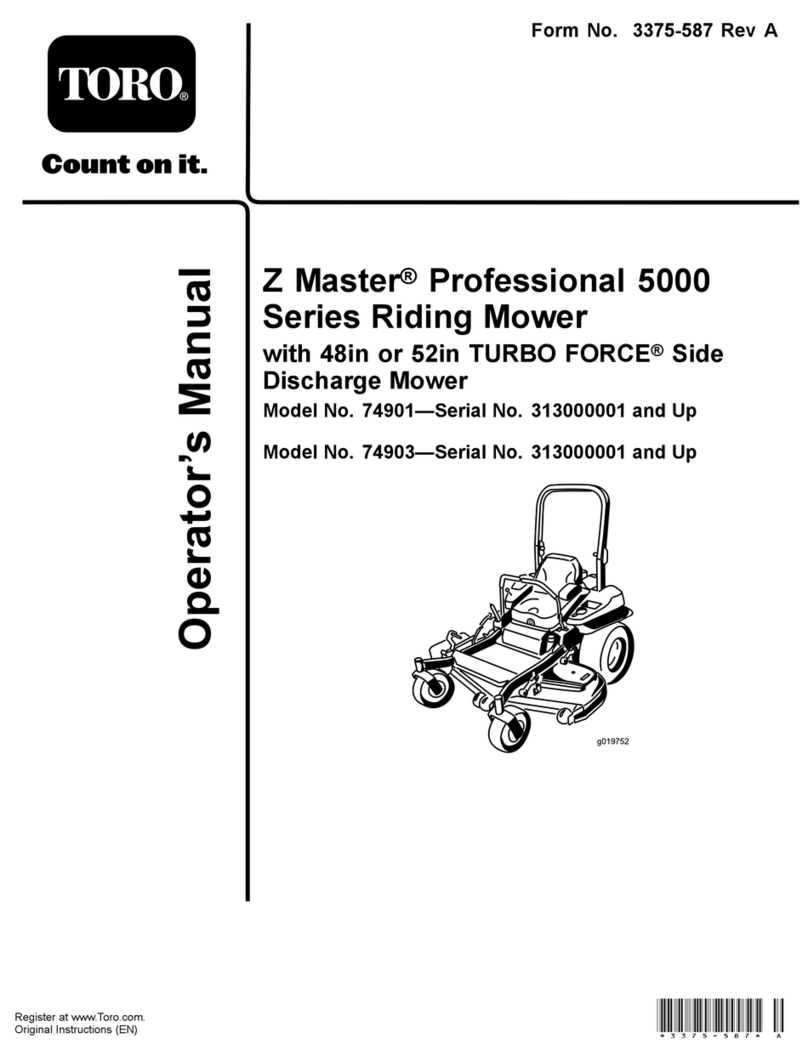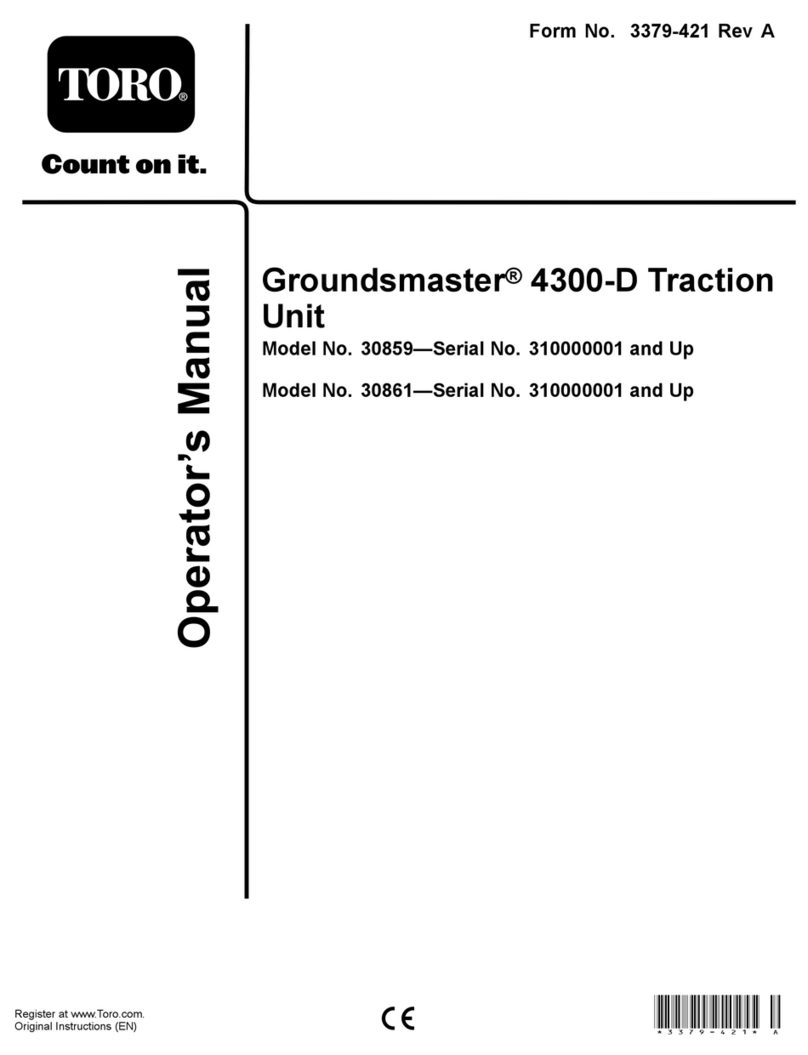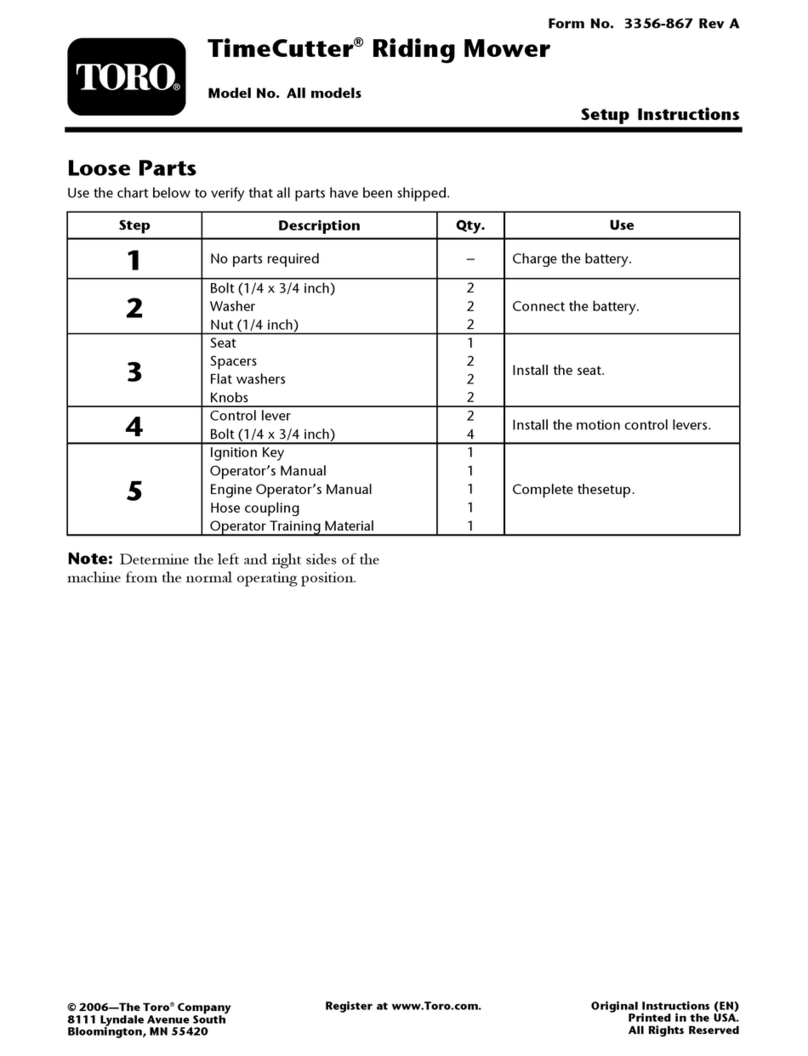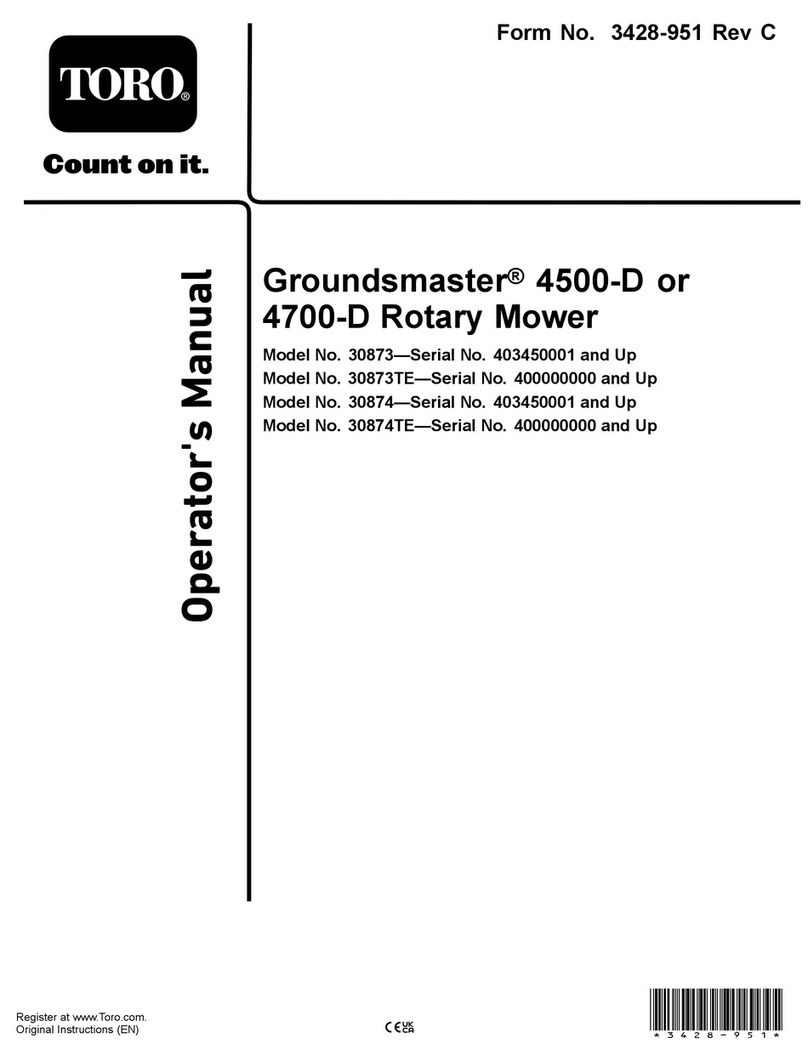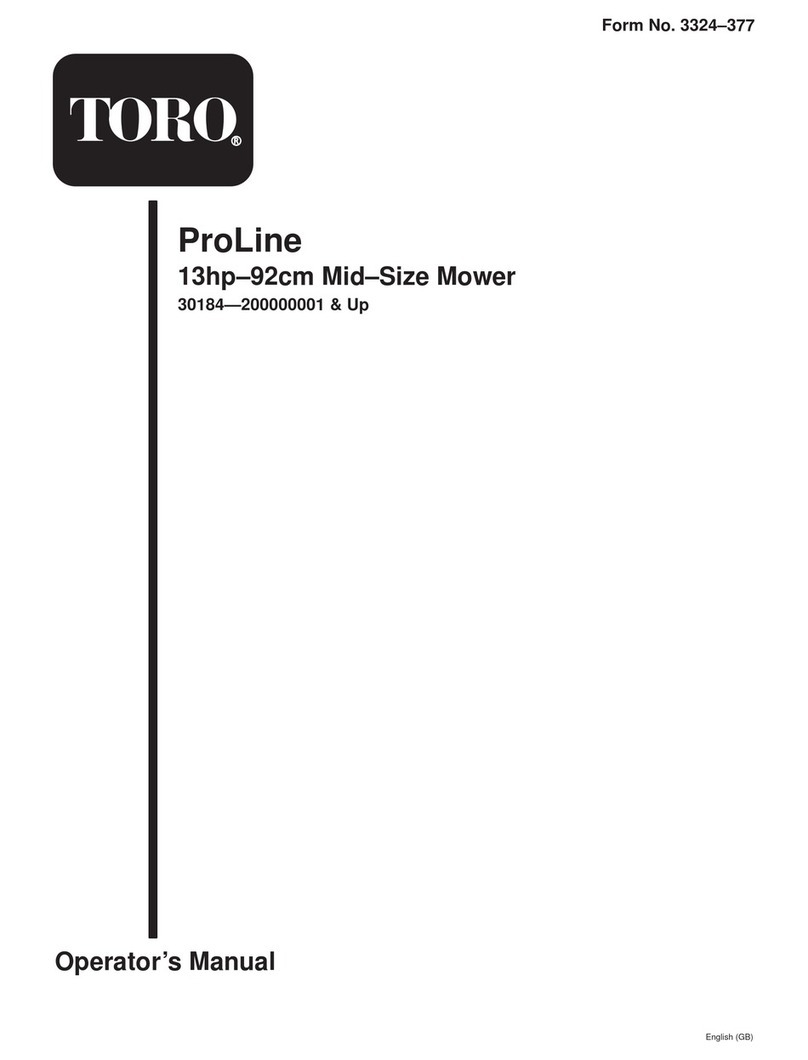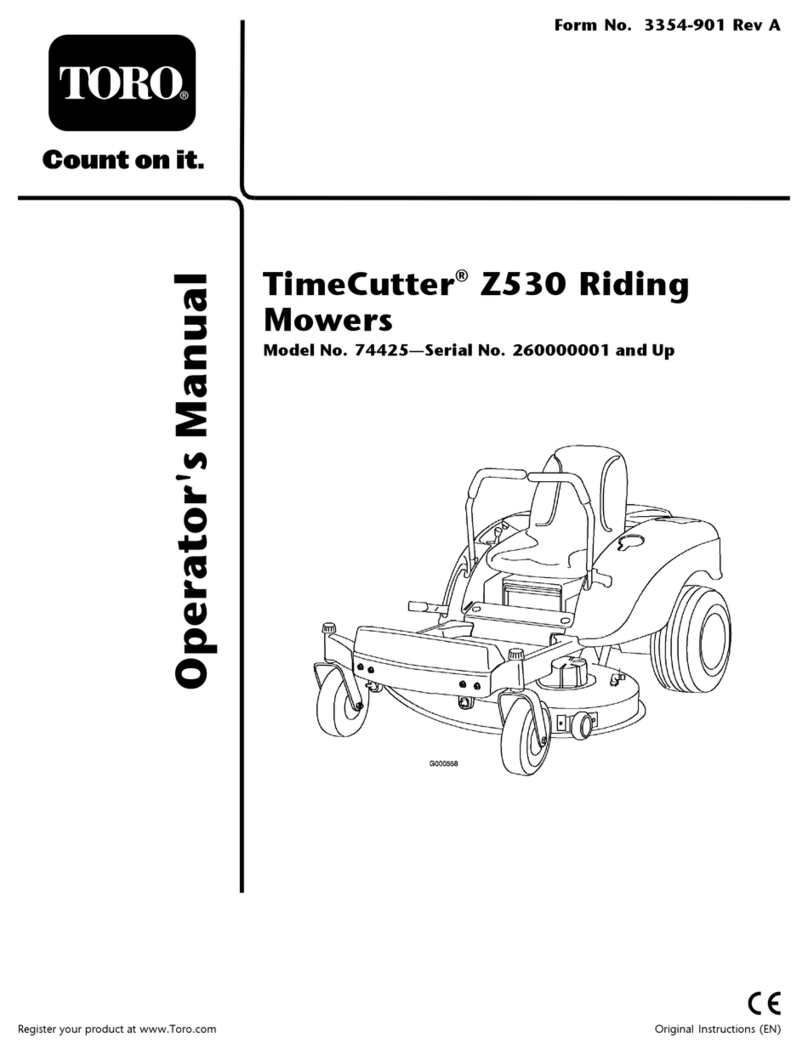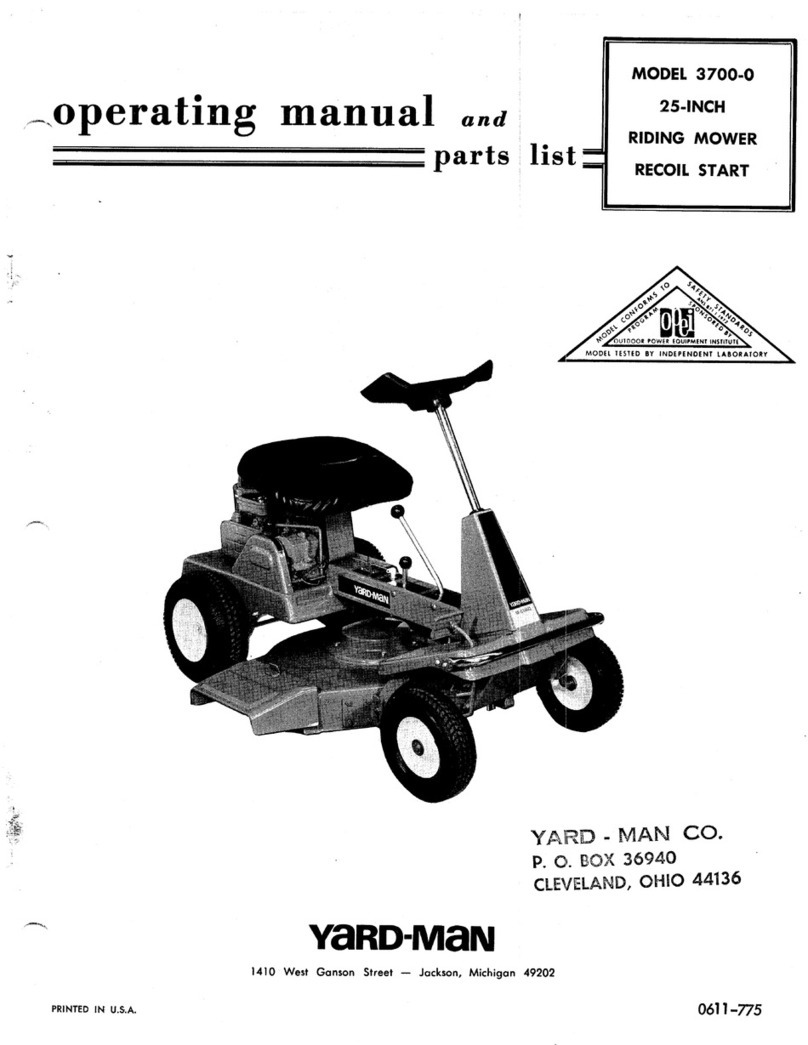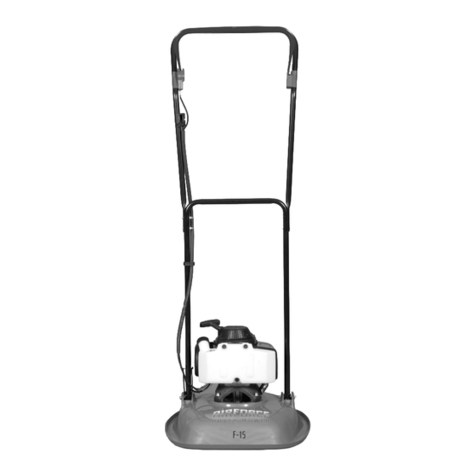
4
SAFETY INSTRUCTIONS
D. Reduce speed when making sharp turns and
when turning on hillsides.
E. Avoid sudden starts and stops.
F. Before backing up, look to the rear and ensure
no one is behind the machine.
G. Watch out for traffic when near or crossing
roads. Always yield the right-of -way.
15. If engine stalls or machine loses headway and
cannot make it to the top of a slope, do not turn
machine around. Always back slowly straight down the
slope.
16. The grass deflector must always be installed and in
lowest position on the side discharge cutting unit.
Never operate mower without deflector or entire grass
collector. This product is designed to drive objects into
the ground where they lose energy quickly in grassy
areas. However, don't take an injury risk!! When a
person or pet appears unexpectedly in or near the
mowing area, STOP MOWING. Careless operation,
combined with terrain angles, ricochets, or improperly
positioned guards, can lead to thrown object injuries.
Do not resume mowing until area is cleared. If the
cutting unit discharge area ever plugs, shut engine off
before removing the obstruction.
17. Never raise the cutting unit while the blades are
rotating.
18. If the cutting blades strike a solid object or the
machine vibrates abnormally, disengage PTO, move
throttle to SLOW, set parking brake and shut engine off.
Remove key from switch to prevent possibility of
accidental starting. Check cutting unit and traction unit
for damage and malfunctioning parts. Repair any
damage before restarting the engine and operating the
cutting unit. Be sure blades are in good condition and
blade bolts are tight.
19. Cut grass slopes carefully. Do not start, stop, or
turn suddenly.
20. Do not touch engine or muffler while engine is
running or soon after it is stopped. These areas couId
be hot enough to cause a burn.
21. Before getting off the seat:
A. Move traction pedal to neutral position and
remove foot from pedal.
B. Set the parking brake and disengage the PTO.
C. Shut the engine off and remove the key from
the ignition switch. Wait for all movement to stop
before getting off the seat.
22. Lower the cutting unit to the ground and remove
key from ignition switch whenever machine is left
unattended.
23. This product may exceed noise levels of 85 dB(A)
at the operator position. Ear protectors are
recommended for prolonged exposure to reduce the
potential of permanent hearing damage.
MAINTENANCE
24. Remove key from ignition switch to prevent
accidental starting of the engine when servicing,
adjusting or storing the machine.
25. Perform only those maintenance instructions
described in this manual. If major repairs are ever
needed or assistance is desired, contact an Authorized
Toro Distributor.
26. To reduce potential fire hazard, keep the engine
free of excessive grease, grass, leaves and
accumulations of dirt.
27. Be sure machine is in safe operating condition by
keeping nuts, bolts and screws tight. Check the blade
mounting bolts and nuts frequently to be sure they are
tightened to specification.
28. Make sure all hydraulic line connectors are tight,
and all hydraulic hoses and lines are in good condition
before applying pressure to the system.
29. Keep body and hands away from pin hole leaks in
hydraulic lines that eject high pressure hydraulic fluid.
Use cardboard or paper to find hydraulic leaks.
Hydraulic fluid escaping under pressure can penetrate
skin and cause injury. Fluid accidentally injected into
the skin must be surgically removed within a few hours
by a doctor familiar with this form of injury or gangrene
may result.
30. Before disconnecting or performing any work on
the hydraulic system, all pressure in system must be
relieved by stopping engine and lowering cutting unit
to the ground.
31. If the engine must be running to perform a
maintenance adjustment, keep hands, feet, clothing
and other parts of the body away from the cutting unit
blades and other moving parts.
32. Do not overspeed the engine by changing
governor settings. To be sure of safety and accuracy,
have an Authorized TORO Distributor check maximum
engine speed with a tachometer.
33. Engine must be shut off before checking oil or
adding oil to the crankcase.
34. At the time of manufacture the cutting unit
conformed to safety standards in effect for riding
mowers. Therefore, to ensure optimum performance
and safety, always purchase genuine TORO
replacement parts and accessories to keep the Toro all
TORO. NEVER USE WILL-FIT" REPLACEMENT
PARTS AND ACCESSORIES MADE BY OTHER
MANUFACTURERS. Look for the TORO logo to ensure
genuineness. Using unapproved replacement parts
and accessories could void the warranty of The Toro
Company.
